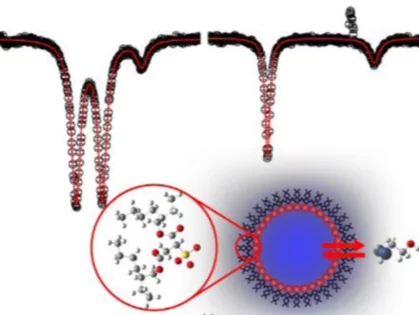The transfer rate of a probe molecule across the interfacial layer of a water-in-oil (w/o) microemulsion was investigated using a combination of transverse field muon spin rotation (TF-μSR), avoided level crossing muon spin resonance (ALC-μSR), and Monte Carlo simulations. Reverse micro-emulsions consist of nanometer-sized water droplets dispersed in an apolar solvent separated by a surfactant monolayer. Although the thermodynamic, static model of these systems has been well described, our understanding of their dynamics is currently incomplete. For example, what is the rate of solute transfer between the aqueous and apolar solvents, and how this is influenced by the structure of the interface? With an appropriate choice of system and probe molecule, μSR offers a unique opportunity to directly probe these interfacial transfer dynamics.
- About the CentercloseAbout the Center
- Our Research
- Our User Facilities
- SINQ: Swiss Spallation Neutron Source
- SμS: Swiss Muon Source
- CHRISP: Swiss Research Infrastructure for Particle Physics
- Scientific Advisory Committees
- Publications
- Jobs & Education


